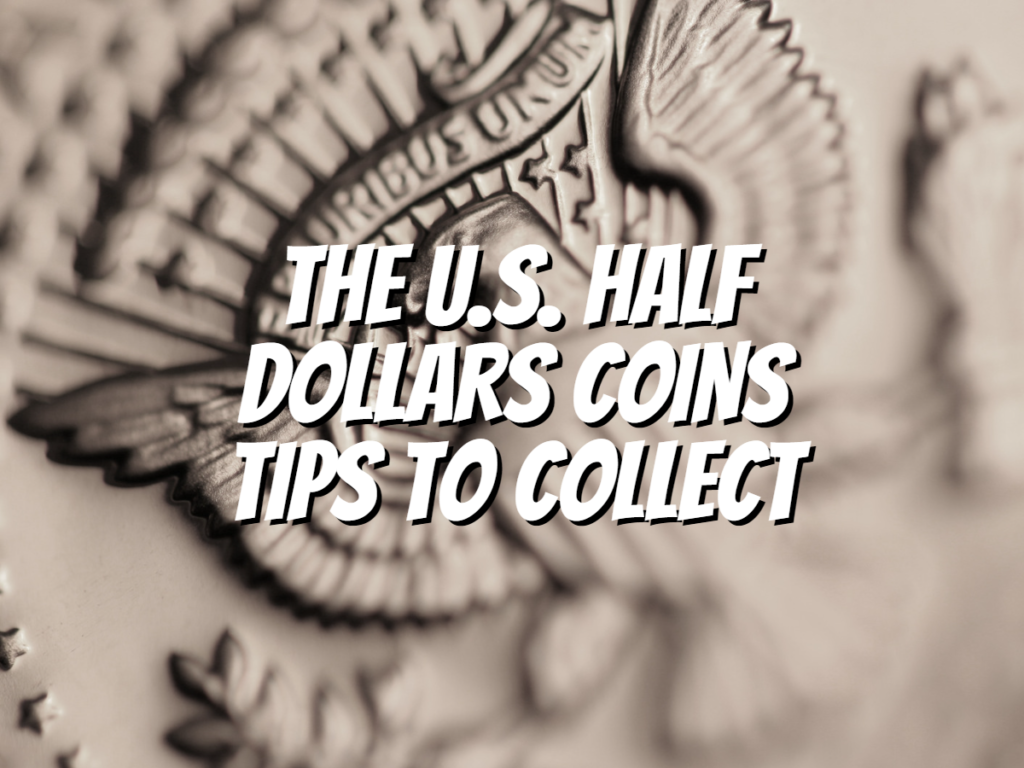This article will help people who collect US half-dollar coins learn how to spot valuable ones and determine their worth.
We’ll also go over some helpful collecting tips and the best U.S. half dollars to collect.
What are U.S. Half Dollars?
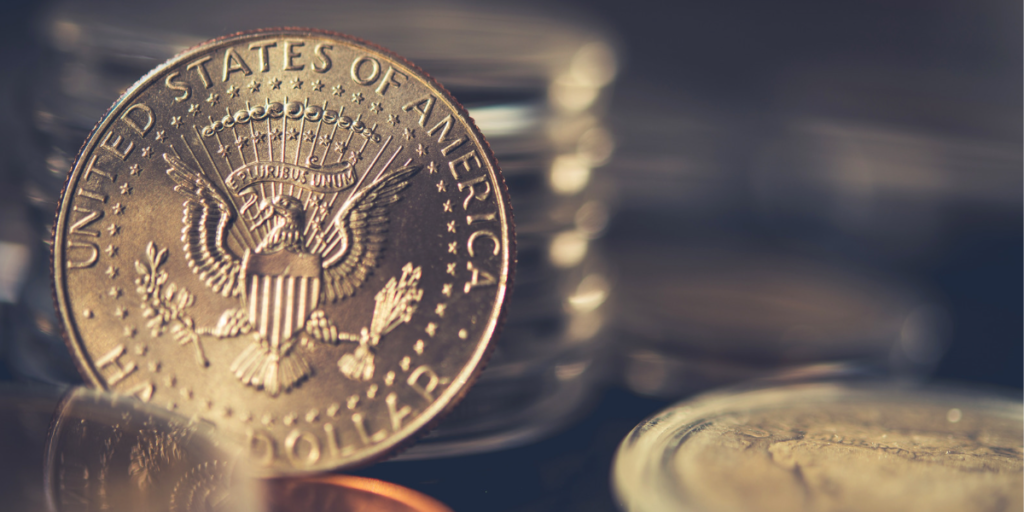
A half dollar is a coin in the United States worth 50 cents, or half a dollar. It is sometimes called the 50-cent piece.
It is the biggest U.S. coin in circulation, weighing twice as much as a quarter. The design of the coin has changed several times over the years.
Since 1964, President John F. Kennedy’s face has been on the front of the half-dollar, and the Seal of the President has been on the back.
Even though they aren’t used much anymore, half-dollar coins and other coin denominations have been used a lot in the past.
However, for many reasons, they are used less than they used to be. Until 2002, when the U.S. Mint stopped making them for general circulation, they were made in large numbers.
Because people aren’t using them as much, there are still a lot of half dollars from before 2002 in the vaults of the Federal Reserve.
This is what led to the change in production. Now, you can order collector half dollars directly from the U.S. Mint and half dollars in circulation before 2002 from most American banks and credit unions.
Half dollars were created and reintroduced into circulation in 2021.
U.S. Half Dollars Variety
The U.S. Half Dollar Coin Collection is a collection of coins minted from 1794 up until today. The most popular types of half dollar coins include:
Flowing Hair Half Dollar

In 1794 and 1795, the first type of half dollar was made. It was called a “Flowing Hair” half dollar.
Both issues are tough to find, and collectors can tell the difference between several 1795 issues.
A maximum of a thousand pieces from each year are still around.
Draped Bust Half Dollar
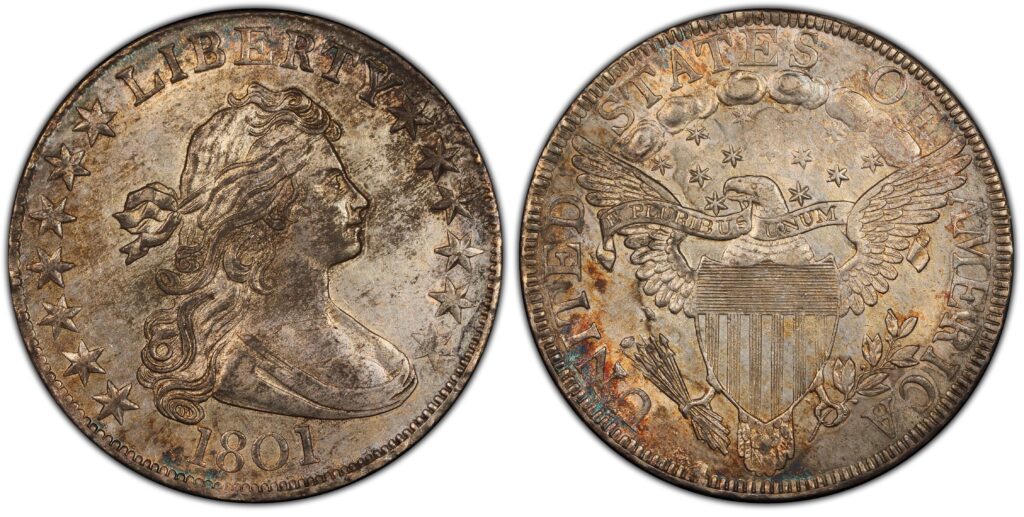
The Draped Bust design was used from 1796 to 1807, and as a type, it is more common than the Flowing Hair halves.
However, all types of 1796 and 1797 halves are extremely rare, with only 3,918 made in total for both years and only a few hundred circulating examples left today.
Capped Bust Half Dollar
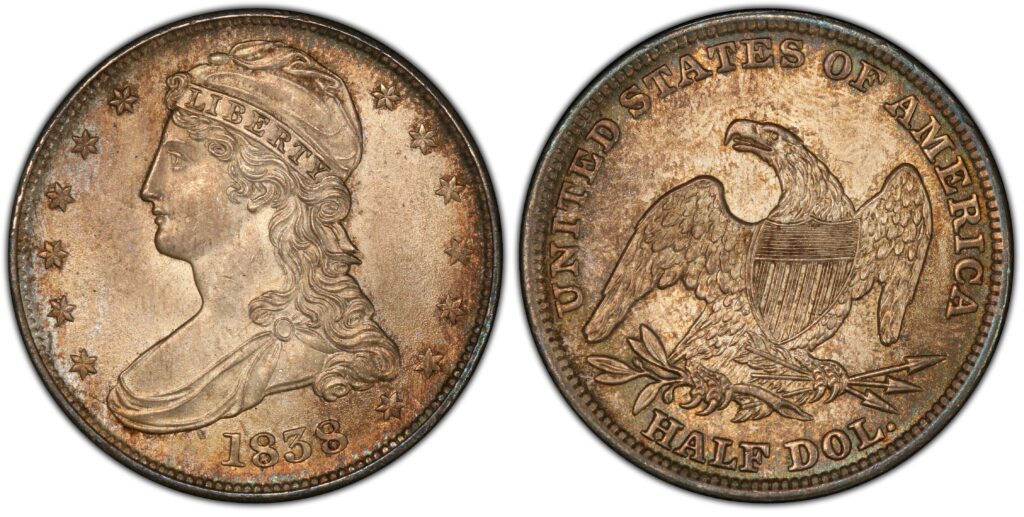
The Capped Bust half dollar was made from 1807 to 1839. Within this group, there are at least two subtypes: the larger-diameter lettered-edge type was made from 1807 to 1836, and the smaller-diameter reeded-edge type was made from 1836 to 1839.
Even though Capped Bust half dollars are easy to find in circulated grades for most issues, there are dozens of known minor and major variations, making this series a real challenge for coin collectors to put together.
One of the rarest is 1817 7 Over 4. There are only eight known examples and a grade AU-50 coin sold for $356,500.
Liberty Seated Half Dollar
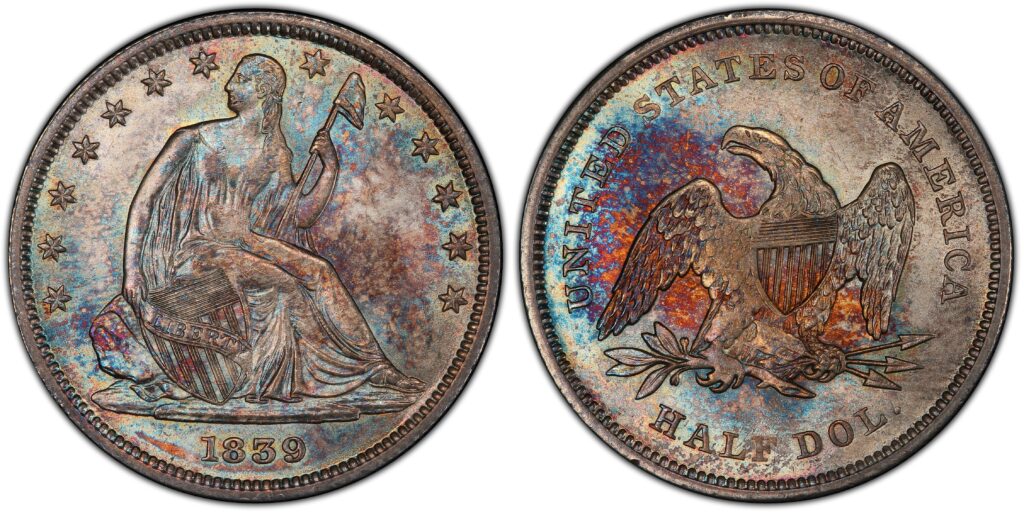
Gobrecht used the Liberty Seated design on a silver dollar for the first time in 1836.
In 1837, it was put on the half dime and dime, and in 1838, it was put on the quarter.
In 1839, the last coin to get a new look was the half dollar.
Barber Half Dollar
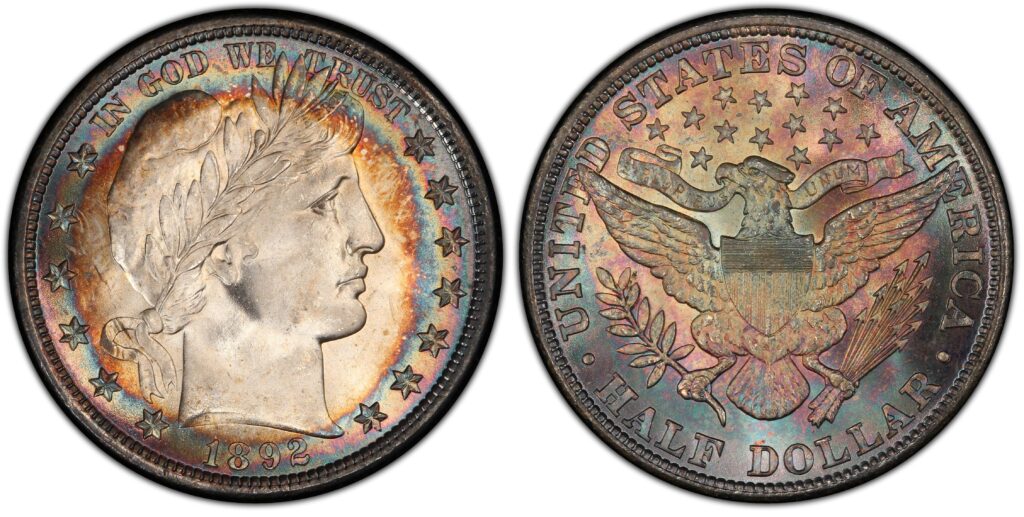
The Liberty Head half dollar, also called the Barber half dollar, was made from 1892 to 1915. It was named after its designer, Charles E. Barber.
Most people who buy Barber Half dollars are type collectors or fans of the 19th-century series.
However, lower-quality Barber half dollars, especially common dates that grade below full good, are often found in “junk silver” hoards because this off-quality or lower-grade Barber halves trade at prices close to melting.
Even though many Barber half dollars are common in terms of date and mint mark, many rare ones are worth much more than spot prices.
This series is hard to complete because almost all of the issues are hard to find in grades of XF40 or better, and many semi-key and key issues are hard to find, even in grades of G4 or F12.
Many people who don’t know much about the series need to realize how hard it is to put together a full run of Barber half dollars in good condition.
Walking Liberty Half Dollar
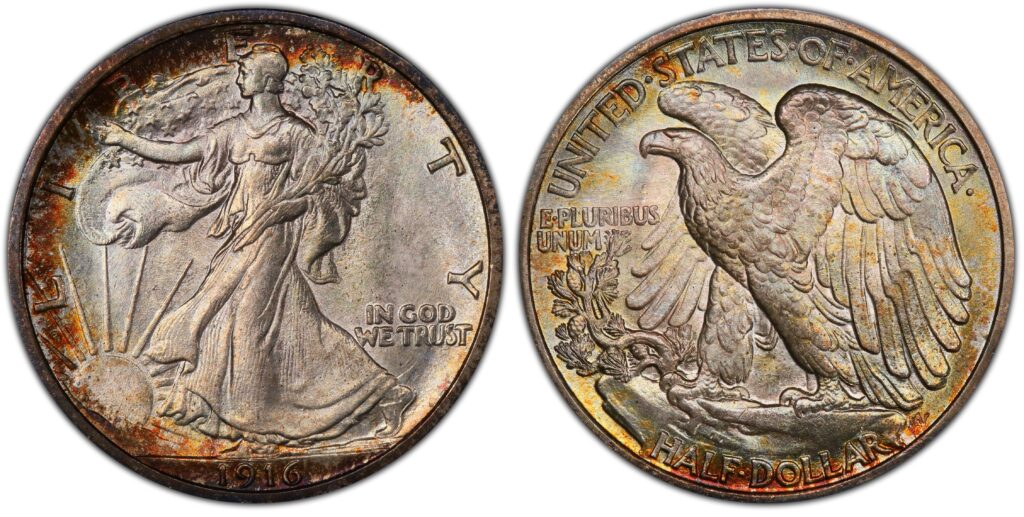
The U.S. Mint made the Walking Liberty half dollar from 1916 to 1947. Adolph A. Weinman,designed it.
In 1915, Robert W. Woolley, the new head of the Mint, came to think that the law not only let him but required him to change coin designs that had been used for 25 years.
So, he started to get rid of the Barber coins. These were the quarters, half dollars, and dimes with similar designs by Charles E. Barber, who worked at the Mint for many years.
They were first made in 1892. Woolley had the Commission of Fine Arts hold a contest, and Weinman won the job of designing the dime and the half dollar.
Franklin Half Dollar
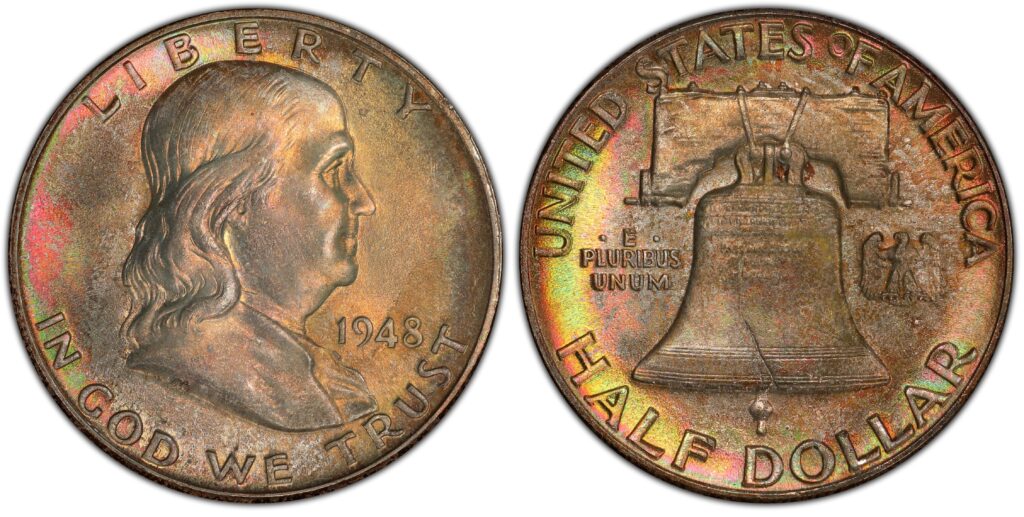
From 1948 to 1963, the United States Mint made the Franklin half dollar coin. On the front of the fifty-cent piece is a picture of Founding Father Benjamin Franklin, and on the back is a picture of the Liberty Bell.
A small eagle was put to the right of the bell to meet the law that says half dollars must have an eagle on them.
The coin was made at the Philadelphia, Denver, and San Francisco mints. It was 90% silver and had a reeded edge.
Kennedy Half Dollar
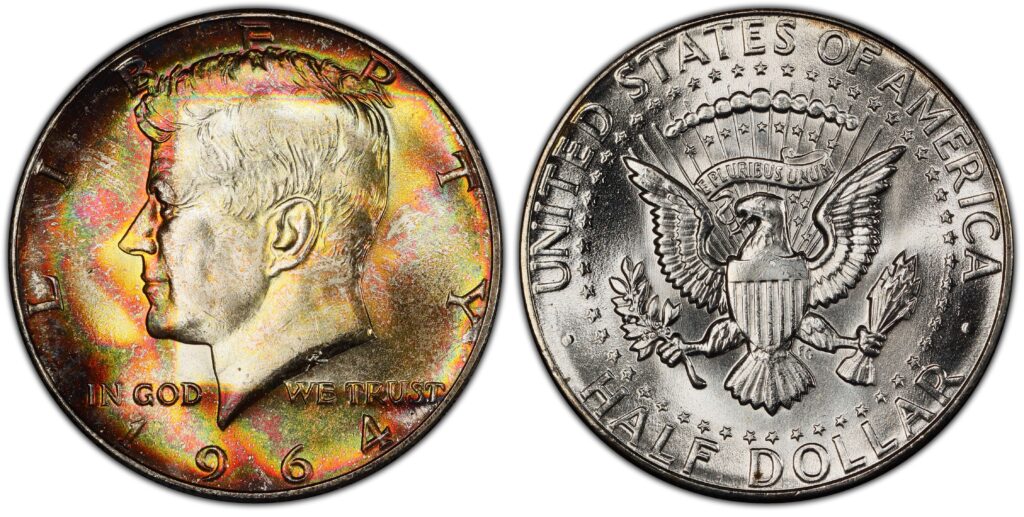
The United States Mint started making the Kennedy half dollar in 1964. It is a fifty-cent coin.
It was approved by Congress just over a month after John F. Kennedy’s death as a memorial to the 35th president, who was killed.
Sculptors at the Mint, Gilroy Roberts and Frank Gasparro, used already-made pieces to make dies quickly, so the new coins could start being made in January 1964.
When they came out in March 1964, collectors and people who wanted to remember the late president stocked up on the silver coins.
Even though the Mint made much more currency, it was rarely seen in circulation. As the price of silver kept increasing, more people started to save it.
Many early Kennedy half dollars were melted down for their silver. Starting with coins dated 1965, the fine silver was cut from 90% to 40% (silver clad), but the coin only got used a little even after this change.
Is it Worth Collecting?
The answer is yes! People who collect U.S. coins like to have half dollar coins in their collection. They have been around for a long time and are very pretty.
Some of the best artists in the world made designs for these coins, which have been used for many years.
A US half-dollar coin’s value depends on how well it is kept and how much it is marked.
If you want to know how much a specific half-dollar coin is worth, you should talk to an appraiser.
Keys to Collecting U.S. Half Dollar
Let’s say you collect coins, buy rolls of coins from your local bank at face value, and are putting together a set of Kennedy half dollars.
Regrettably, in 2002, the Mint stopped making business strikes for circulation. Instead, they are presented solely for use in collector sets and are offered by the Mint.
However, your local coin dealer may have these coins with dates of 2002 or later for a modest premium over face value.
Avid collectors attempt to create a collection that includes uncirculated, Proof coins, unique strikes, mistake coins, key dates, and various kinds.
Build a whole set of uncirculated Kennedy half dollars. Most of these coins must be purchased from coin dealers or internet auctions.
Before you go…
We hope this guide has been useful as you start your quest to become a coin collector. Of course, when it comes time for you to start buying coins, as we previously discussed, it can be easy to become overwhelmed by the various alternatives. But there is one thing you have learned from this information. In that scenario, starting with U.S. half dollars is a terrific idea because there are so many different kinds available right now!
Check out my next article: “1967 SMS Quarter – Do You Need This in Your Collection?“
Related Articles:

